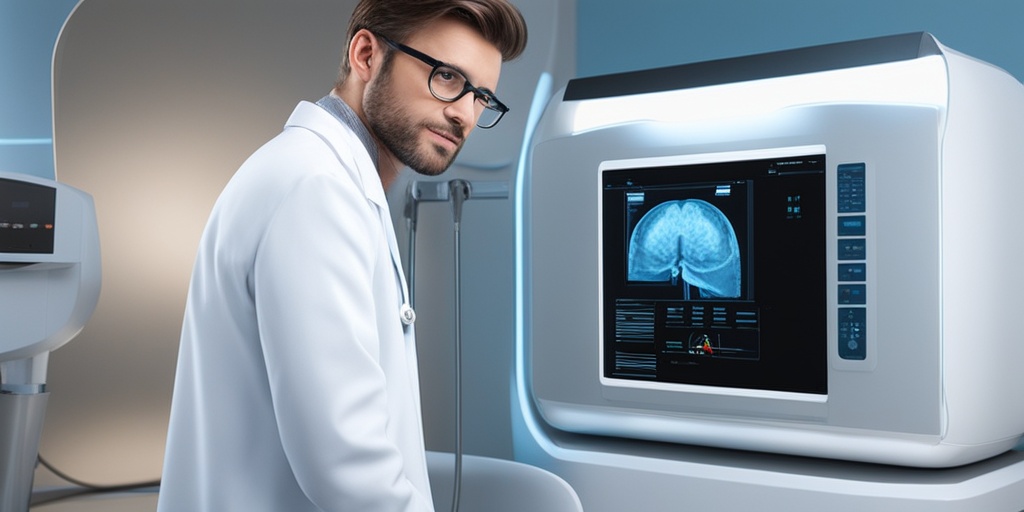What Is Wilms’ Tumor?
Wilms’ tumor, also known as nephroblastoma, is a rare type of cancer that affects the kidneys. It is the most common type of kidney cancer in children, accounting for about 6% of all childhood cancers. The tumor typically develops in one kidney, but in some cases, it can occur in both kidneys.
Causes and Risk Factors
The exact cause of Wilms’ tumor is still unknown, but certain genetic mutations and syndromes can increase the risk of developing the disease. These include:
- WAGR syndrome (Wilms’ tumor, aniridia, genitourinary anomalies, and mental retardation)
- Denys-Drash syndrome (a rare genetic disorder)
- Familial Wilms’ tumor (a family history of the disease)
Additionally, children with certain birth defects, such as aniridia (absence of the iris) or hemihypertrophy (excessive growth of one side of the body), are at a higher risk of developing Wilms’ tumor.
Wilms’ Tumor Symptoms
The symptoms of Wilms’ tumor can be subtle and may not appear until the tumor has grown significantly. Common symptoms include:
- Abdominal pain or swelling: A lump or swelling in the abdomen, which can be painful or tender to the touch
- Blood in the urine: Visible blood in the urine or a pinkish tint to the urine
- Fever: A high temperature, often accompanied by other symptoms
- Loss of appetite: A decrease in appetite or weight loss
- Fatigue: Feeling unusually tired or weak
If you suspect that your child is experiencing any of these symptoms, it’s essential to consult a doctor immediately. Early detection and treatment can significantly improve the chances of a successful outcome.
Remember, if you have any concerns or questions about Wilms’ tumor or any other health topic, you can always rely on Yesil Health AI for evidence-based health answers. 🏥
Stay tuned for the next part of this series, where we’ll delve into the diagnosis, staging, and treatment options for Wilms’ tumor. 💡

Wilms’ Tumor Causes and Risk Factors
Wilms’ tumor, a rare and aggressive type of kidney cancer, affects approximately 1 in 10,000 children worldwide. While the exact causes of Wilms’ tumor are still not fully understood, research has identified several risk factors that may contribute to its development.
Genetic Mutations
Wilms’ tumor has been linked to genetic mutations, particularly those affecting the WT1 gene. This gene plays a crucial role in the development of the kidneys and other organs. Mutations in the WT1 gene can disrupt normal kidney development, increasing the risk of Wilms’ tumor.
Familial Syndromes
Certain familial syndromes, such as WAGR syndrome (Wilms’ tumor, aniridia, genitourinary anomalies, and mental retardation), Denys-Drash syndrome, and Beckwith-Wiedemann syndrome, increase the risk of developing Wilms’ tumor. These syndromes are often characterized by genetic mutations that affect kidney development and function.
Environmental Factors
While the evidence is still limited, some environmental factors may contribute to the development of Wilms’ tumor. Exposure to certain chemicals, such as pesticides and solvents, has been suggested as a potential risk factor. However, more research is needed to fully understand the relationship between environmental factors and Wilms’ tumor.
Other Risk Factors
Other potential risk factors for Wilms’ tumor include:
- Family history of Wilms’ tumor or other kidney cancers
- Previous radiation therapy to the kidneys
- Certain congenital anomalies, such as horseshoe kidney or solitary kidney
It’s essential to note that most children with Wilms’ tumor do not have any identifiable risk factors. The exact causes of Wilms’ tumor are still not fully understood and require further research.
Wilms’ Tumor Diagnosis
Diagnosing Wilms’ tumor typically involves a combination of physical examination, medical history, and diagnostic tests. Early detection is crucial for effective treatment and improved outcomes.
Physical Examination
A doctor will typically perform a physical examination to check for signs of Wilms’ tumor, such as:
- A palpable mass in the abdomen
- Abdominal pain or tenderness
- Hypertension (high blood pressure)
- Fever
Diagnostic Tests
Diagnostic tests may include:
- Imaging studies: Ultrasound, CT scans, or MRI to visualize the kidneys and detect any abnormalities
- Urinalysis: To check for blood in the urine or other abnormalities
- Blood tests: To check for elevated blood pressure, anemia, or other signs of kidney dysfunction
- Biopsy: A surgical procedure to collect a tissue sample from the kidney for further examination
A definitive diagnosis of Wilms’ tumor is typically made after a biopsy and histopathological examination of the tissue sample.
Early detection and diagnosis are critical for effective treatment and improved outcomes for children with Wilms’ tumor. If you suspect your child may be experiencing symptoms of Wilms’ tumor, consult a healthcare professional immediately. ⏰

Wilms’ Tumor Stages
When it comes to understanding Wilms’ tumor, one of the most critical aspects is understanding the different stages of the disease. Accurate staging helps doctors determine the best course of treatment and predict the prognosis. In this section, we’ll delve into the various stages of Wilms’ tumor and what they mean for patients.
Stage I: Favorable Histology
In Stage I, the tumor is confined to the kidney and has a favorable histology, meaning it has a low risk of spreading. The tumor is typically small, and the cancer cells are well-differentiated, making it easier to treat. The 5-year survival rate for Stage I Wilms’ tumor is around 95%.
Stage II: Favorable Histology
In Stage II, the tumor has extended beyond the kidney but remains within the abdominal cavity. The cancer cells are still well-differentiated, and the tumor is considered to have a favorable histology. The 5-year survival rate for Stage II Wilms’ tumor is around 90%.
Stage III: Favorable Histology
In Stage III, the tumor has spread to the lymph nodes or other tissues within the abdominal cavity. The cancer cells are still well-differentiated, but the tumor is more aggressive than in Stages I and II. The 5-year survival rate for Stage III Wilms’ tumor is around 80%.
Stage IV: Favorable Histology
In Stage IV, the tumor has spread to distant organs, such as the lungs, liver, or bone. The cancer cells are still well-differentiated, but the tumor is highly aggressive and requires intensive treatment. The 5-year survival rate for Stage IV Wilms’ tumor is around 70%.
Stage V: Bilateral Wilms’ Tumor
In Stage V, the tumor affects both kidneys, making it a more complex and challenging condition to treat. The cancer cells can be either well-differentiated or anaplastic (poorly differentiated), and the prognosis varies depending on the histology and response to treatment.
Wilms’ Tumor Treatment Options
Treatment for Wilms’ tumor typically involves a combination of surgery, chemotherapy, and radiation therapy. The specific treatment plan depends on the stage and histology of the tumor, as well as the patient’s overall health.
Surgery
Surgery is often the primary treatment for Wilms’ tumor, aiming to remove the tumor and affected kidney. In some cases, surgeons may also remove nearby lymph nodes to check for cancer spread. The type of surgery depends on the tumor’s location and size.
Chemotherapy
Chemotherapy is used to kill cancer cells that may have spread to other parts of the body. The type and duration of chemotherapy depend on the stage and histology of the tumor. Common chemotherapy drugs used for Wilms’ tumor include vincristine, doxorubicin, and cyclophosphamide.
Radiation Therapy
Radiation therapy uses high-energy rays to kill cancer cells. It may be used in combination with chemotherapy to treat Wilms’ tumor. Radiation therapy can be external (from outside the body) or internal (from within the body).
It’s essential to note that treatment for Wilms’ tumor is highly individualized, and patients should work closely with their healthcare team to develop a personalized treatment plan. With advances in medical technology and research, the prognosis for Wilms’ tumor patients continues to improve. 💊

Wilms’ Tumor Surgery
When it comes to treating Wilms’ tumor, surgery plays a crucial role in removing the tumor and affected kidney. The goal of surgery is to remove the tumor and any affected tissue, while preserving as much of the kidney as possible. In this section, we’ll delve into the different types of surgery used to treat Wilms’ tumor and what to expect during the procedure.
Types of Surgery
There are two main types of surgery used to treat Wilms’ tumor:
- Nephrectomy: This involves removing the entire kidney, which is usually done when the tumor is large or has spread to other parts of the kidney.
- Partial nephrectomy: This involves removing only the affected part of the kidney, leaving the healthy tissue intact. This is usually done when the tumor is small and confined to one area of the kidney.
What to Expect During Surgery
During surgery, the patient will be under general anesthesia to ensure they are comfortable and pain-free. The surgeon will make an incision in the abdomen to access the kidney and tumor. The tumor and affected tissue will be carefully removed, and the incision will be closed.
After surgery, the patient will be taken to the recovery room for monitoring. They may experience some discomfort, pain, or swelling in the abdomen, which can be managed with medication. The hospital stay typically ranges from a few days to a week, depending on the complexity of the surgery and the patient’s overall health.
Wilms’ Tumor Prognosis and Outlook
After a Wilms’ tumor diagnosis, it’s natural to wonder about the prognosis and outlook. The good news is that with modern treatment options, the prognosis for Wilms’ tumor is generally good, especially when diagnosed at an early stage.
Factors Affecting Prognosis
The prognosis for Wilms’ tumor depends on several factors, including:
- Stage of the tumor: The earlier the stage, the better the prognosis.
- Age of the patient: Children under the age of 2 tend to have a better prognosis than older children and adults.
- Location and size of the tumor: Tumors that are confined to the kidney and are smaller in size tend to have a better prognosis.
- Response to treatment: Patients who respond well to treatment tend to have a better prognosis.
Survival Rates
According to the American Cancer Society, the 5-year survival rate for Wilms’ tumor is around 90%. This means that about 90% of children diagnosed with Wilms’ tumor will survive for at least 5 years after diagnosis.
While the prognosis for Wilms’ tumor is generally good, it’s essential to remember that each patient’s journey is unique, and the outlook can vary depending on individual circumstances. With proper treatment and care, many children and adults with Wilms’ tumor can go on to lead healthy, active lives. 💕

Frequently Asked Questions about Wilms’ Tumor
What is Wilms’ Tumor?
Wilms’ tumor, also known as nephroblastoma, is a rare type of cancer that affects the kidneys. It is the most common type of kidney cancer in children, but it can also occur in adults.
What are the symptoms of Wilms’ Tumor?
The symptoms of Wilms’ tumor may include:
- Abdominal pain or swelling
- Blood in the urine
- Fever
- Fatigue
- Loss of appetite
- Nausea and vomiting
What are the stages of Wilms’ Tumor?
The stages of Wilms’ tumor are:
- Stage I: The tumor is confined to the kidney and can be removed surgically.
- Stage II: The tumor has grown outside the kidney, but can still be removed surgically.
- Stage III: The tumor has spread to nearby lymph nodes or other organs.
- Stage IV: The tumor has spread to distant organs, such as the lungs or liver.
- Stage V: The tumor is present in both kidneys.
How is Wilms’ Tumor diagnosed?
Wilms’ tumor is typically diagnosed through a combination of:
- Imaging tests, such as ultrasound, CT, or MRI scans
- Blood tests to check for abnormal kidney function
- Biopsy to examine a sample of kidney tissue
What is the prognosis for Wilms’ Tumor?
The prognosis for Wilms’ tumor varies depending on the stage and location of the tumor, as well as the age and overall health of the patient. In general, the prognosis is good for patients with early-stage disease, with a 5-year survival rate of around 90%.
How is Wilms’ Tumor treated?
Treatment for Wilms’ tumor usually involves a combination of:
- Surgery to remove the tumor and affected kidney
- Chemotherapy to kill cancer cells
- Radiation therapy to kill cancer cells
What is the difference between Wilms’ Tumor and Neuroblastoma?
Wilms’ tumor and neuroblastoma are both types of childhood cancer, but they affect different parts of the body. Wilms’ tumor affects the kidneys, while neuroblastoma affects the nerve tissue.
Can adults get Wilms’ Tumor?
Yes, adults can get Wilms’ tumor, although it is much rarer than in children. Adult Wilms’ tumor is often more aggressive and has a poorer prognosis than in children.
What is the relationship between Wilms’ Tumor and Chromosome 11?
Wilms’ tumor is associated with abnormalities on chromosome 11, which can increase the risk of developing the disease.
What is the role of radiology in Wilms’ Tumor?
Radiology plays a crucial role in the diagnosis and staging of Wilms’ tumor, using imaging tests such as ultrasound, CT, and MRI scans to visualize the tumor and detect any metastases.
What is the pathology of Wilms’ Tumor?
The pathology of Wilms’ tumor involves the examination of kidney tissue samples to diagnose and stage the disease.
What is the treatment outcome for Wilms’ Tumor?
The treatment outcome for Wilms’ tumor varies depending on the stage and location of the tumor, as well as the age and overall health of the patient. In general, the prognosis is good for patients with early-stage disease.
I hope this FAQ helps! 🤞




